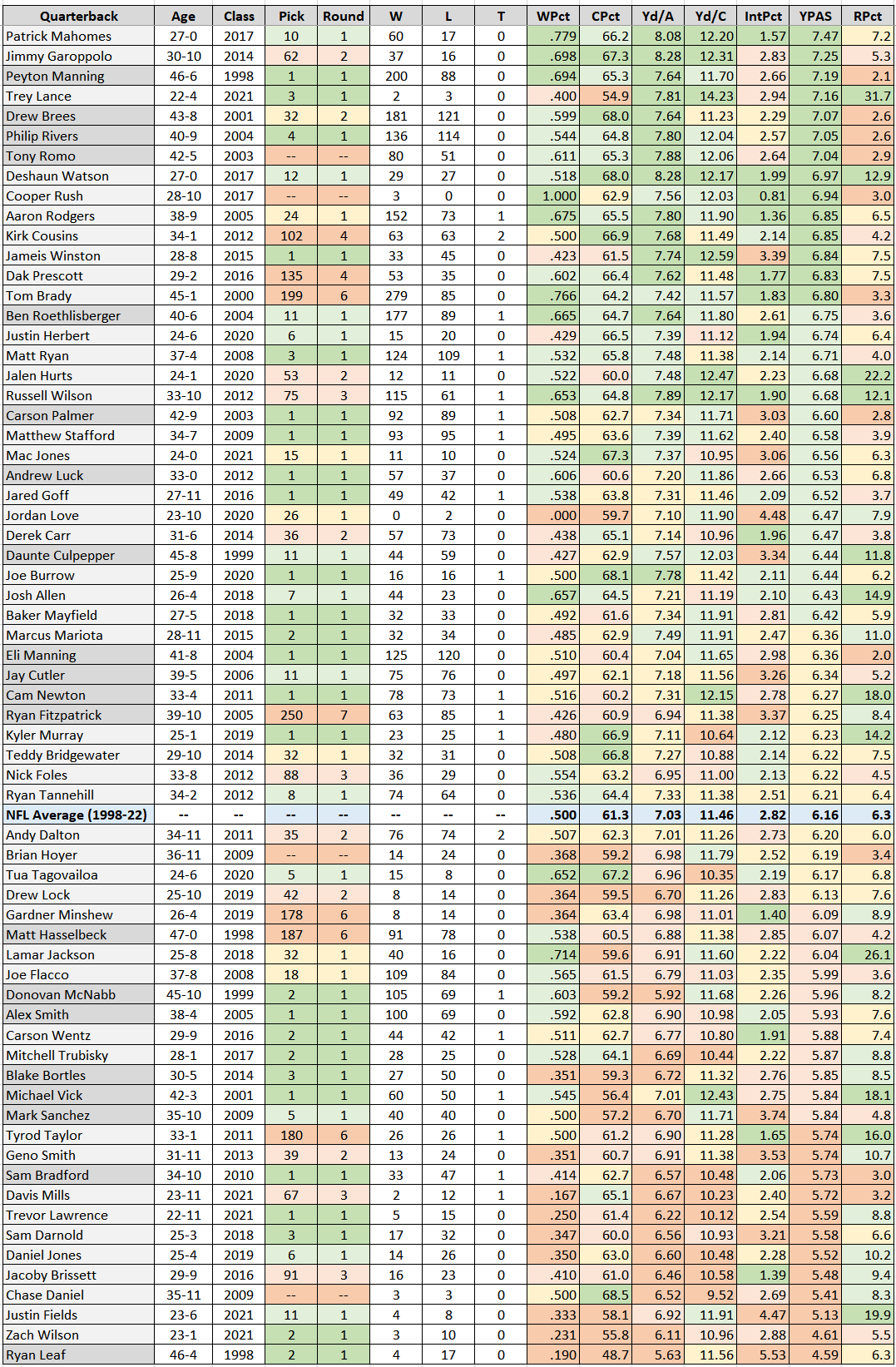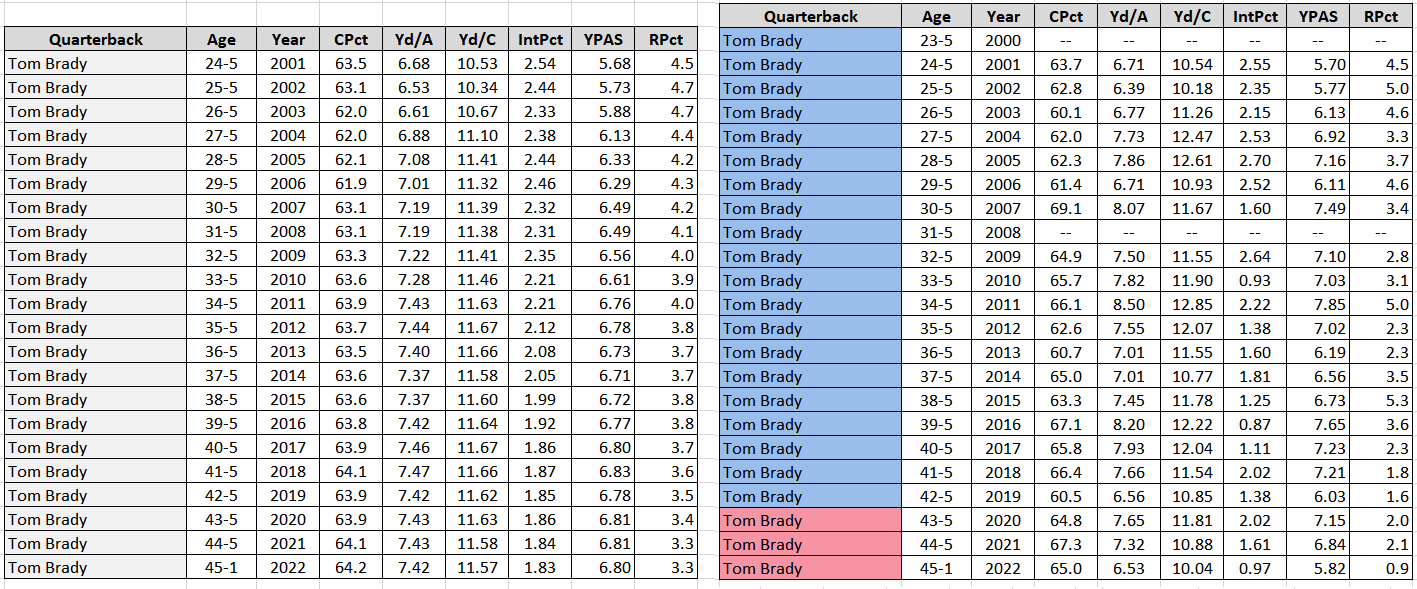When evaluating quarterbacks, I often use the following statistics, and try and cover as much of a time period as possible, since players only have 16-17 games in a season and that means sample sizes are often uncomfortably low.
A combination of yards per pass attempt, yards per completion and completion percentage. This gives me a good picture of both what the quarterback is trying to do and a general idea of how successful he is at doing it. Yards per attempt acts as somewhat of an average between the other two, so if a quarterback ranks high in completion percentage and low in yards per completion, you might suspect a conservative game plan or too many checkdowns. If it’s the reverse, then the quarterback is testing the defense downfield more than his peers, which might excuse a slightly higher interception percentage.
I check running percentage – scrambles and designed runs divided by runs plus sacks plus pass attempts (kneel-downs are eliminated from the database). A quarterback who runs more than others tends to have a different development curve and a shorter career. Running quarterbacks almost always have high yards per completion as well. If they can do this and maintain a relatively low interception percentage, you can see just how difficult it is to prepare a defense against them.
The gold standard in quarterback evaluation is interception percentage. Turnovers affect the game in ways that nothing else can. A quarterback can be a star in every possible metric, but if he throws too many picks, he’s hurting his team. This is why Jameis Winston and Jimmy Garoppolo aren’t making $40 million a year.
The final statistic I use, and offers a great quick-and-dirty ranking of quarterbacks, is yards per attempted pass, including sacks. That, in combination with interception percentage, probably tells you all you need to know to give a thumbs up or a thumbs down on a quarterback.
The following chart shows all current NFL quarterbacks who might be considered starters or possible starters (except rookies) this year, as well as notable recent quarterbacks from the 1998-2022 period.

You might notice that some stars from the recent pass have more interceptions and more yards per completion than you’d expect in today’s game. The next chart shows a bit of the recent evolution of the NFL and will help put some of those numbers in better context (for instance, Drew Brees was exceptional in avoiding interceptions, though his career total seems high by today’s standards).

Finally, when evaluating younger quarterbacks, how much time do you allow for development? High-run quarterbacks generally look their best around year two. They’re better out of the gate and they develop quickly. However, their careers don’t last as long, and as they accumulate hits, their game can suffer a bit because they can’t run as much or perhaps have other injuries. Most quarterbacks are where they’re going to be around the end of year three. Some have extremely rough rookie years. Occasionally, and Eli Manning is the most extreme case I’ve seen, they don’t come anywhere near peak performance until six years in the league. But no one would give a quarterback that much time to develop – he was an average starter long before that. Very occasionally, you get a Patrick Mahomes, who is fantastic as soon as he gets into a game. But that cannot be expected, and he might be a generational player.
I’ve included some detail about a very familiar quarterback. You’ll see that early in his career, Tom Brady was more a game manager, kept improving, and in his fourth season as a starter, reached star status and was no longer considered just Bill Belichick’s on-the-field manager. This development curve is more the norm for low-run quarterbacks, but the still-playing-at-45, and not that badly, is unique in football’s history.
On the left side is his cumulative career total, and on the right side, his year-by-year statistics. You see why New England was concerned he finally wore down in 2019. Only to win the Super Bowl MVP Award the following year in Tampa Bay.
